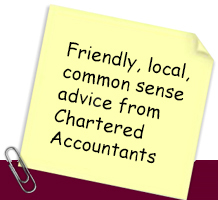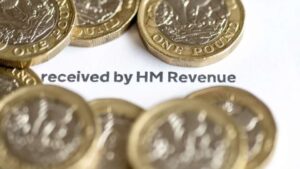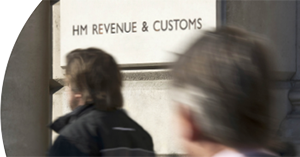A reminder that from 1 March 2021, the long awaited VAT changes for CIS registered sub-contractors, who are registered for VAT, will apply. The following notes explain what needs to be done.
Presently, if you invoice a contractor for your construction services, and you are registered for VAT, you will add VAT at the appropriate rate to your invoice. When the contractor pays you, the VAT element you have collected is then paid to HMRC via your VAT returns.
This process will change from 1 March 2021
The process is changing as a growing number of subcontractors have registered for VAT, collected the VAT added to their invoices from contractors and then disappeared without paying over the VAT collected to HMRC.
To counter this, from 1 March 2021, most of your supplies of services to contractors will be subject to the “VAT domestic reverse charge for building and construction services” (DRC). In plain English this means that you will no longer add VAT to your invoices for affected construction services, instead, your contractor customer will pay the VAT on your supply, to HMRC.
Generally speaking, the DRC will affect supplies of building and construction services supplied at the standard or reduced rates, that also need to be reported under the CIS regulations. The DRC will not apply if the service you supply is zero-rated for VAT purposes.
Unlike the CIS rules, where tax is deducted from your supply of labour, not materials, the DRC change will affect both supplies.
Needless to say, this change has created a number of complex issues that VAT registered sub-contractors will need to adapt to or face the dark-side of HMRC’s penalty regime. Listing all these complications in this update would no-doubt send you to sleep. Instead, we have added below, the actions that you will need to consider before 1 March 2021. Please read this shopping list and then contact us; we will help you make the changes to your accounting processes to keep you the right side of this new legislation.
Matters you need to consider before 1 March 2021:
- Are your supplies affected? Check to see if your provision of services to main contractor customers comes within the scope of the DRC. In most cases you will have to contact your customers to confirm this. A list of services is appended to this update.
- Change your invoices. Make sure you understand how to invoice for your DRC services after 1 March – you need to omit the usual VAT charge and add a note explaining that DRC applies.
- Update your accounts software. Make appropriate changes to your accounts software or other records that create your VAT returns.
- Beware cash flow consequences. Consider the effects that adapting to DRC may have on your cash flow.
- DRC may not apply to all your sales. The DRC will not apply to your services supplied to “end users”, i.e., your customer is not a registered CIS contractor but a house-owner for example. You will need to take this into account when invoicing as you will need to add VAT to these supplies in the normal way.
- Switch to monthly VAT accounting? If most of your work is with CIS contractors you may find that from 1 March 2021 you have little or no VAT to pay to HMRC, but you still have VAT to claim back from your suppliers, merchants etc. To speed up the recovery of this input VAT you might be advised to register for monthly VAT returns instead of the usual quarterly returns.
- VAT cash accounting scheme. If you are presently using the VAT Cash Accounting Scheme (CAS) continuing use may be compromised under the DRC rules. The CAS cannot be used for the supply of services that are subject to the DRC. This could impact your cash flow and planning may be required.
- VAT Flat Rate Scheme (FRS. As with the CAS, DRC supplies to your customers cannot be accounted for under the FRS. This may mean that any advantage of using the FRS after 1 March 2021 may no longer apply; in which case you may be advised to stop using the FRS option.
- Changes to your sales invoices. From 1 March 2021, your invoices will need to include a formal statement if they are a DRC supply.
The above checklist covers the basic issues you will need to consider.
APPENDIX:
You will have to apply the domestic reverse charge if you supply any of these services:
- constructing, altering, repairing, extending, demolishing or dismantling buildings or structures (whether permanent or not), including offshore installation services
- constructing, altering, repairing, extending, demolishing of any works forming, or planned to form, part of the land, including (in particular) walls, roadworks, power lines, electronic communications equipment, aircraft runways, railways, inland waterways, docks and harbours
- pipelines, reservoirs, water mains, wells, sewers, industrial plant and installations for purposes of land drainage, coast protection or defence
- installing heating, lighting, air-conditioning, ventilation, power supply, drainage, sanitation, water supply or fire protection systems in any building or structure
- internal cleaning of buildings and structures, so far as carried out in the course of their construction, alteration, repair, extension or restoration
- painting or decorating the inside or the external surfaces of any building or structure
- services which form an integral part of, or are part of the preparation or completion of the services described above – including site clearance, earth-moving, excavation, tunnelling and boring, laying of foundations, erection of scaffolding, site restoration, landscaping and the provision of roadways and other access works
The following services are not subject to the reverse charge:
- drilling for, or extracting, oil or natural gas
- extracting minerals (using underground or surface working) and tunnelling, boring, or construction of underground works, for this purpose
- manufacturing building or engineering components or equipment, materials, plant or machinery, or delivering any of these to site
- manufacturing components for heating, lighting, air-conditioning, ventilation, power supply, drainage, sanitation, water supply or fire protection systems, or delivering any of these to site
- the professional work of architects or surveyors, or of building, engineering, interior or exterior decoration and landscape consultants
- making, installing and repairing art works such as sculptures, murals and other items that are purely artistic
- signwriting and erecting, installing and repairing signboards and advertisements
- installing seating, blinds and shutters
- installing security systems, including burglar alarms, closed circuit television and public address systems





